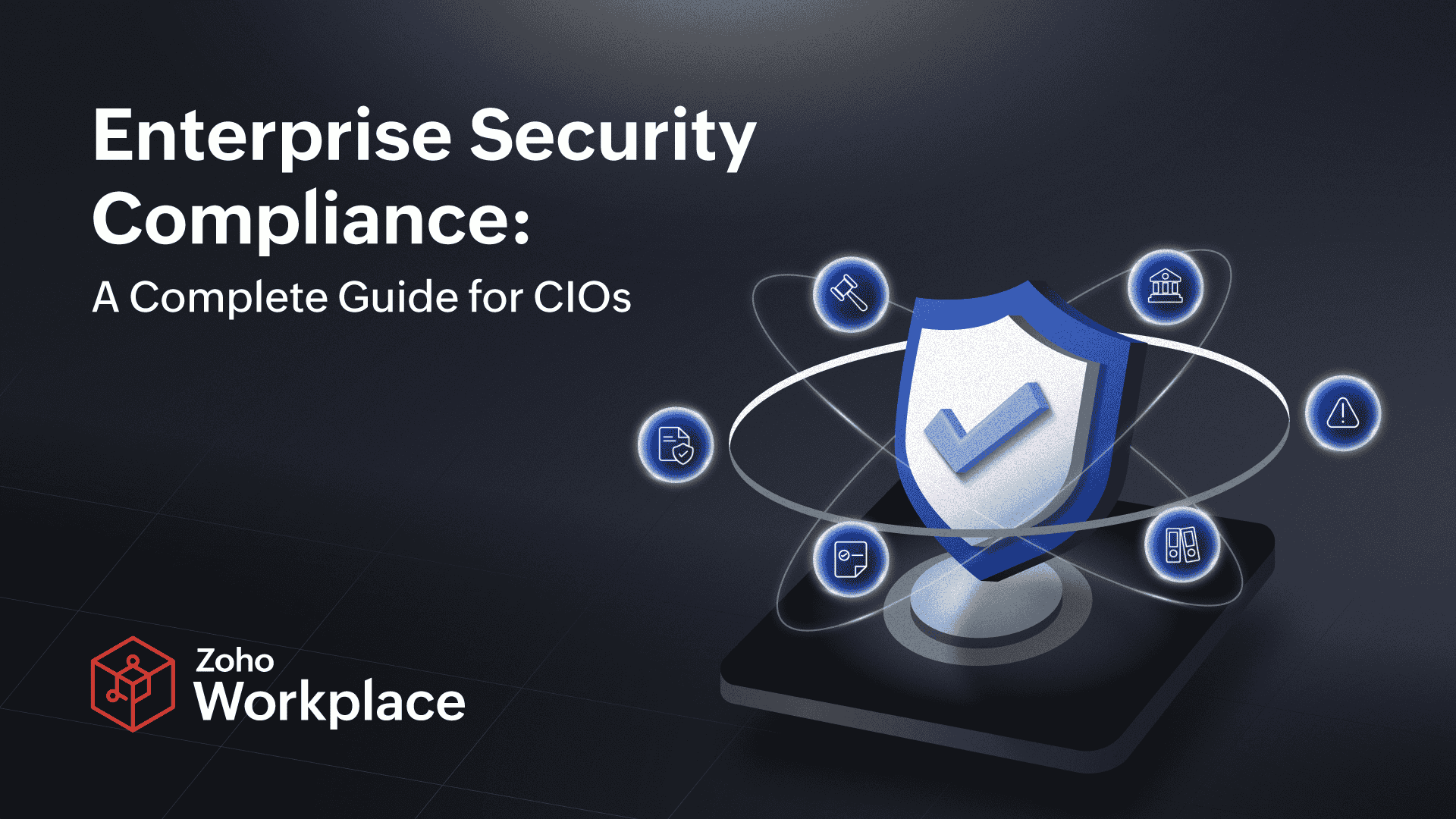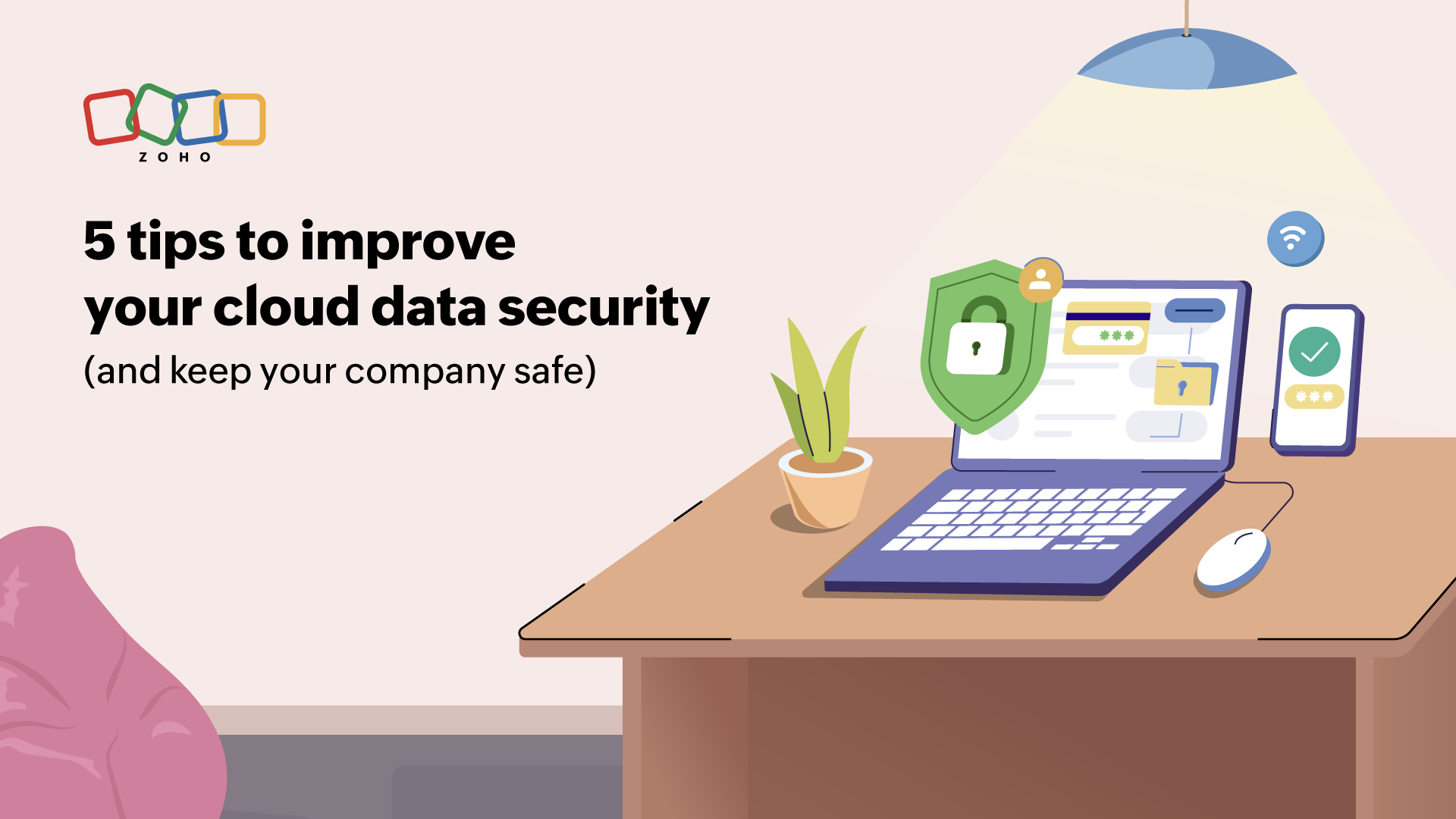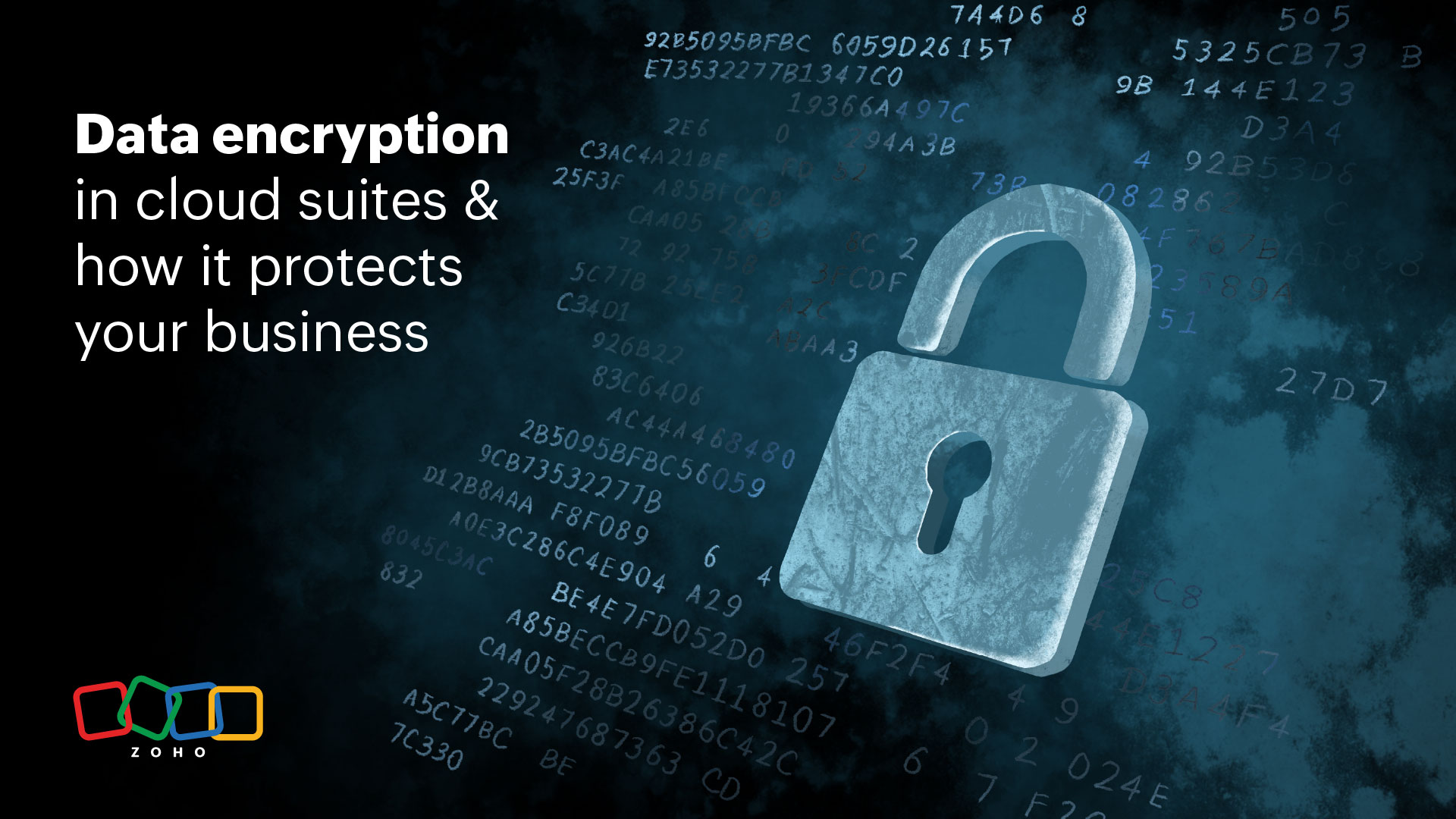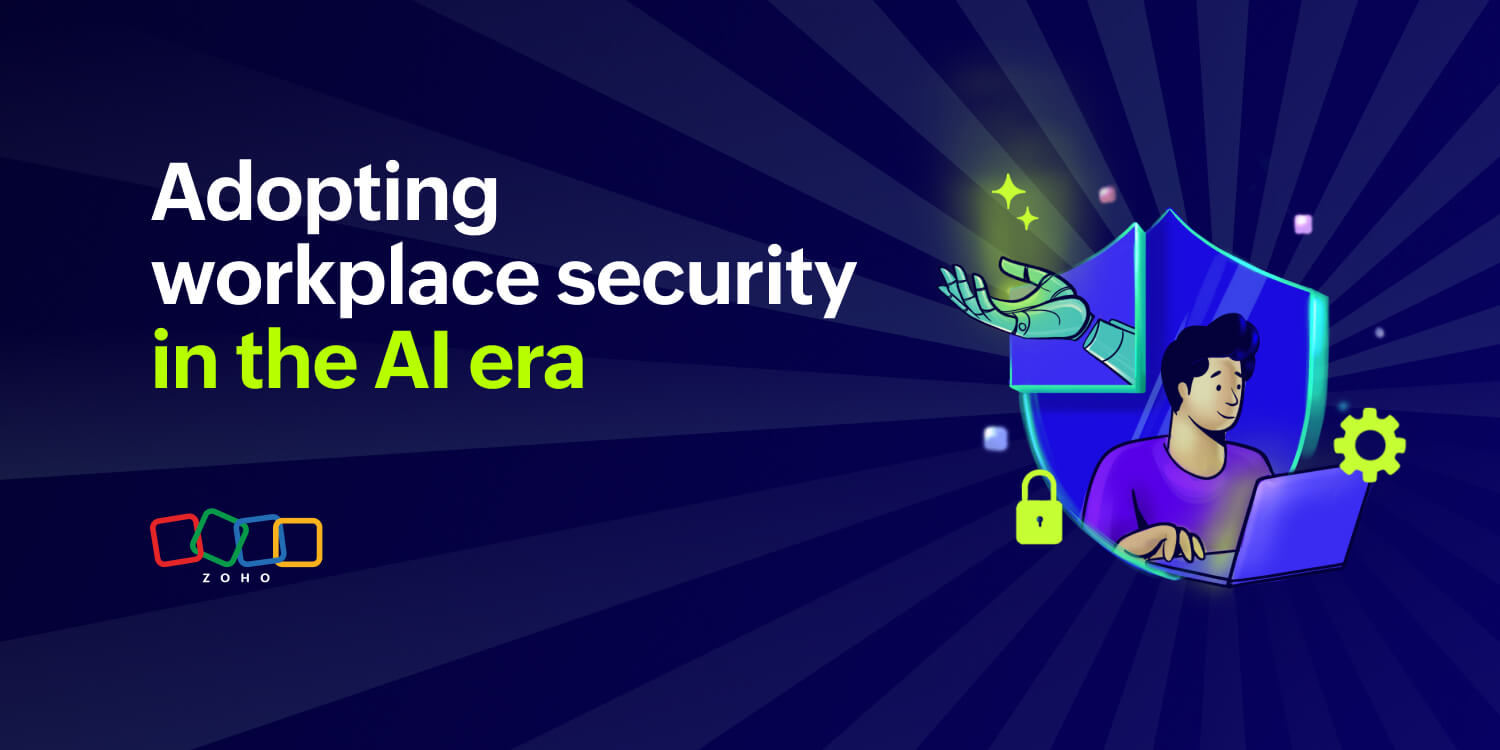- HOME
- All Topics
- Workplace Security
- Enterprise security compliance: A complete guide for CIOs
Enterprise security compliance: A complete guide for CIOs
- Published : September 30, 2025
- Last Updated : September 30, 2025
- 272 Views
- 7 Min Read
When the average data breach costs $4.4 million, security becomes a massive priority. But for enterprise organizations, it’s about more than just preventing these risks to avoid losses. These companies have to abide by extensive regulatory and compliance frameworks that make security compliance more than just a priority. It’s an obligation.
In this guide, you’ll learn about enterprise security compliance, examples of compliance frameworks that enterprise organizations typically have to abide by, and best practices for doing so.

What is enterprise security compliance?
Enterprise security compliance broadly covers the requirements, practices, and processes involved in keeping data, systems, and assets secure within an enterprise. While all companies have responsibilities when it comes to security, enterprise organizations have a much heavier burden. These organizations typically have to comply with more stringent regulations and proactively deploy extensive security measures, whether it’s due to their size, their activities, or their industry. Additionally, their operations are potentially international, meaning they may need to abide by regulations that vary from jurisdiction to jurisdiction.
Security compliance is typically addressed in the context of data, with enterprise organizations being expected to take significant steps to protect both their customers’ data and their own sensitive information. That being said, other security concerns—such as properly securing physical offices—can fall within enterprise security compliance as well.
Enterprise organizations typically have robust compliance programs that include the following at a minimum:
- A risk-management process: Risk management is a framework allowing organizations to pre-emptively identify security risks, evaluate their probability, and plan for them ahead of time. If any of these risks should materialize, the organization will then have an action plan to follow.
- Regulatory compliance: A key element of enterprise security compliance is consistent compliance with various regulatory frameworks. Data privacy regulations, for example, can change quickly, forcing your organization to adapt its processes. Having teams that regularly check these regulations and audit your processes for compliance is essential.
- Cybersecurity policies: Enterprise organizations have a responsibility to keep their systems and data secure from cyberattacks. Proactive cybersecurity processes, from testing systems for vulnerabilities to training employees, are essential for remaining compliant.
- Remote work policies: Remote work can expose organizations to additional security risks, whether that’s through the use of unauthorized devices or accessing the internet through less-than-secure networks.
4 examples of compliance frameworks
Every enterprise organization is subject to potentially dozens of compliance frameworks, depending on its jurisdiction, industry, or activities. A full list of these frameworks is beyond the scope of this guide, but the four compliance frameworks below are some of the most well-known and best-suited to demonstrating the importance of enterprise security compliance.
GDPR
The General Data Protection Regulation (GDPR) is a data privacy law applicable to any organization that operates in the European Union and the European Economic Area. This law covers how companies should treat the personal data of users and customers, how data should be processed, how the people who share that data with companies should be treated, how data controllers should act, and how third-party data processors should be disclosed.
Companies that are subject to GDPR but not compliant can be fined, making compliance a high-stakes affair.
SOC 2
SOC 2 (System and Organization Controls 2) is a voluntary framework that covers the management of user data. Originally developed by the American Institute of Certified Public Accountants, this framework allows organizations to submit to audits that test their processes, tools, and disclosures. It gives organizations data security targets to aim for and a path to making their processes more secure. SOC 2 audits processes such as data encryption, incident response, uptime, and access control.
Compliance with SOC 2 gives organizations a certification they can use as a selling point with customers, as well as enhance their internal processes.
ISO 27001
Prepared and published by the ISO (International Organization for Standardization), ISO 27001 is a framework covering information security, cybersecurity, and privacy protection. It guides organizations through establishing and maintaining an information security management system. This system, made up of policies, procedures, and controls, protects the data that an organization produces or collects from customers and users.
HIPAA
HIPAA (Health Insurance Portability and Accountability Act) is a law that covers stringent requirements for protecting the health information of patients in the U.S. While its scope is far more limited than other frameworks in this list, it has some of the most restrictive data protection requirements of any such framework. Organizations that interact with the healthcare industry in the U.S. have to do much more to protect all patient data they handle than similar organizations in other fields.
The top 4 enterprise security compliance challenges
Enterprise security compliance is an essential part of your organization’s operations, but it requires significant investment to get right. Complying with security frameworks and regulations typically involves the following challenges.
Manual process inefficiencies
Processes are typically manual unless someone actively automates them. Remaining compliant with regulations, laws, and other frameworks creates hundreds, if not thousands, of small tasks and responsibilities, which are far too much for anyone to handle. Other manual processes (e.g., approvals, data sharing requests) can create follow-up work for remaining compliant or, worse, challenge your organization’s compliance.
Multi-framework management complexity
Organizations are rarely subject to a single compliance framework. This creates an ever-increasing burden for compliance, requiring significant resources just to stay up to date. Many frameworks have overlapping requirements that need to be cross-referenced when addressing existing processes and new security issues, or even when considering new software tools.
Continuous monitoring of requirements
Requirements from various frameworks are rarely static. When the European Union’s GDPR was first implemented in 2018, it completely transformed the way organizations had to manage their data when operating in the EU. Then, in 2025, it underwent significant reforms, once more forcing organizations to adapt.
With GDPR being just one of the many frameworks an organization may be subject to, simply monitoring the way these frameworks change can be a significant burden.
Documentation and audit preparation
Staying compliant with various regulations and security frameworks requires that organizations produce significant documentation about processes, workflows, and internal policies. This documentation is essential to keeping these systems compliant over time, as well as documenting the decisions made as these systems are established and modified. They’re essential for the audits your organization will need to submit to in order to remain compliant.
Producing, maintaining, and updating this documentation creates a significant amount of work for the teams responsible for compliance.
Best practices for enterprise security compliance
Keeping your organization compliant with the various frameworks and regulations that may apply to its operations is a significant undertaking. That said, the following best practices can limit the administrative burden your teams will encounter, as well as prevent potentially expensive fines.
Be proactive, not reactive
Too many organizations are stuck in a cycle of reacting to changes in regulations or updated compliance requirements, forcing them to invest significant resources into meeting these changes every time they happen. This can create an additional compliance burden as you meet existing requirements.
Instead, proactively establish the protocols you need for your organization to remain compliant. This may mean having a team dedicated to compliance, pre-screening any software tools you buy for relevant compliance frameworks, as well as having clear policies for employees to follow (especially around data security).
Implement automated monitoring
Compliance tracking tools are dedicated software platforms that monitor your organization’s compliance with various security frameworks automatically. Instead of requiring teams to audit their own processes manually or outsourcing compliance to third-party specialists, these platforms can assess your compliance, perform audits, report on potential incidents, and more.
Establish clear governance frameworks
Governance is an essential part of compliance and key to a proactive compliance strategy. Through governance, you can establish closer control over your day-to-day operations, with clear policies around how decisions are made, risk management, and performance management. Without an established governance framework, essential compliance tasks fall through the cracks.
Conduct regular risk assessments
You need a clear idea of any potential instances of non-compliance, so you can get ahead of them and make a plan. Say, for example, that your organization relies on several cloud-based enterprise tools. A risk assessment may involve examining all of these tools for a potential data breach, evaluating the impact such a breach would have, and preparing a plan to deal with a breach should it occur.
Risk assessments allow you to test your processes, tools, and assets for the events that could challenge your compliance with various frameworks.
Invest in employee training
It’s a cliché because it’s true: Every employee has a part to play in compliance. An employee can notice a vulnerability that could lead to a data breach, or an unsafe process that puts their physical security at risk, or a lax attitude towards compliance from a superior. Regular, up-to-date training promotes awareness of security compliance and gives employees the tools to help maintain it.
Keep software and hardware up to date
A Windows update isn’t just an inconvenience; it’s essential for enterprise security compliance. The same goes for your software. These updates include important modifications that protect you from vulnerabilities as they’re discovered. Out-of-date hardware and software can be especially vulnerable to data breaches and other attacks.
Cloud software typically updates automatically, meaning you don’t have to do much to keep it up to date. On-premise software, however, usually has to be updated by your IT teams.
Keep everything secure
Enterprise organizations have massive day-to-day operations that can span multiple jurisdictions, creating a significant compliance burden. But with the right tools and the right processes, your organization can make security compliance a priority and maintain compliance through any changes. Address risks proactively, build compliance into your processes, and give every employee a part to play, and you’ll see a difference.
 Genevieve Michaels
Genevieve MichaelsGenevieve Michaels is a freelance writer based in France. She specializes in long-form content and case studies for B2B tech companies. Her work focuses on collaboration, teamwork, and trends happening in the workplace. She has worked with major SaaS brands and her creative writing has been published in Elle Canada, Vice Canada, Canadian Art Magazine, and more.


